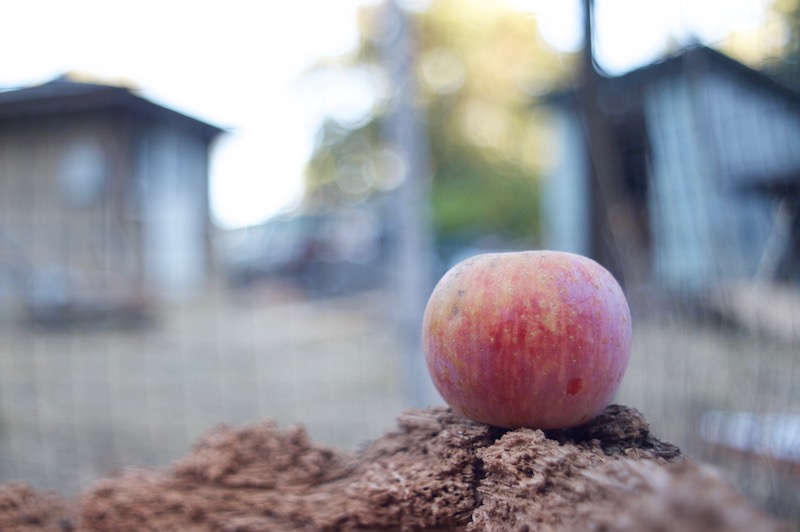It is very rare for axes to come out of the factory in good chopping condition. If an axe does not cut, more of the energy of every swing will be dissipated as useless percussive energy- pounding away on a log. Failure to cut well causes more handle shock and is just less fun. An axe that doesn't cut well may also be more likely to glance. A guideline stated in some books and not infrequently repeated, is that the area that you grind to make a new axe cut well should be in a sort of fan shape. Some sources also recommend that it is a certain depth, three inches. While that can be fine, there are various circumstances where application of that as a rule simply won't work. This is the classic dummy rule scenario, where a guideline that is already rough, even in a context where it is at least applicable, is broadly stated without any qualification. I made this video for two reasons. One is that the recommendation causes confusion and someone asked me about it recently. The other is that I think people should not use it as a recommendation, but more like a point of interest in context.
The rule is not applicable to any but one approach to axe design, which I've seen people refer to as high center-line. These axes are exceedingly common in America, comprising the great majority. They have a hollow between the eye and the cheek of the axe, and a convex shape from side to side. When one of these is thinned out until it chops well, the result is often this sort of fan shape. It does not apply to other styles of axe shape, like flat wedges, some flat, slab-like European axes, or axes with a fairly narrow sharpened bevel, with little to no convexity from toe to heel, and with a hollow right behind it. It simply does not apply at all to those three types of axes.
Another thing that is silly about this rule is offering any specific measure of how far back the axe should be ground from the edge assumes too much. To say that it should be ground 3 inches back, or any other number is to misguide. While the style of axes that the rule does apply to will typically have a lot in common, variability in design and manufacture render any specific recommendation arbitrary.
Axes as they come from the manufacturer are rarely in chopping condition. They require not just sharpening, but significant filing or grinding to remove a bulk of metal in order to thin the cheeks of the axe so that it will cut well. If you have this classic pattern of american axe, convex from side to side and with a mid blade hollow as Dudley Cook calls it, it will probably file into some semblance of a half circle or fan shape. That shape can vary a great deal though in it's shape and dimensions from variability in the manufacture of axe heads.
Suggestions on how to grind axes vary quite a bit and are typically vague. The most thorough treatment is in Dudley Cook's, The Axe Book. Both An Axe to Grind, put out by the USDA, and the book that it draws heavily from Woodsmanship, by Bernard S. Mason, (both free to read online) provide a traceable template for measuring the bevels and curvature from the edge back, which is a much more useful tool and idea and in these cases is meant to be used in conjunction with the concept of filing to a fan shape. To look at the fan shape alone, give it any actual dimensions and suggest it be applied broadly to axes is, I think, a bad idea in any case. Dummy rules are often not useful and sometimes harmful. In my opinion, they make dummies more than they serve them.
As to how best to grind your axe for chopping, the mason book is probably a good place to start, if you have that high center line type of axe. It provides a template for the edge and a little way back of it. Just ignore the recommendation on the depth of the fan being 3 inches deep, which it may very well not. Also, remember that the fan shape it not the goal. An axe with thinned cheeks that cuts well is the goal and the fact that it will end up a fan or crescent shape of some description is closer to a point of interest than a rule. In some cases, the original shape of the axe may be very uneven, or not a "classic" representation of it's type. You can file the sides to relieve the cheeks to achieve something more along the lines of that fan shape, in which case the idea becomes more useful. Anyone interested enough in axes to read this should also own The Axe Book, and Dudley Cook is more specific in there about geometry than any thing else I've seen in paper print, digital print or on video. Approaches vary however, so each of these is just the Authors belief or preference and we would do well not to take such as gospel from anyone. I don't have enough of an opinion on three dimensional geometry of axes to make any kind of recommendation, but the bottom line is that your axe needs to cut. Of course grind may vary with intended use, skill level and species cut.




















